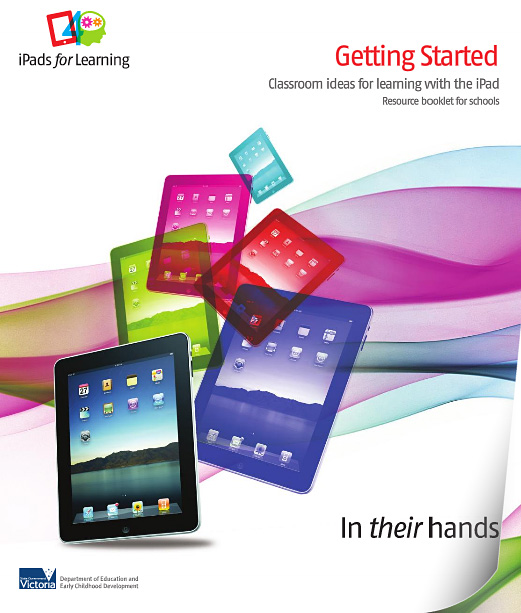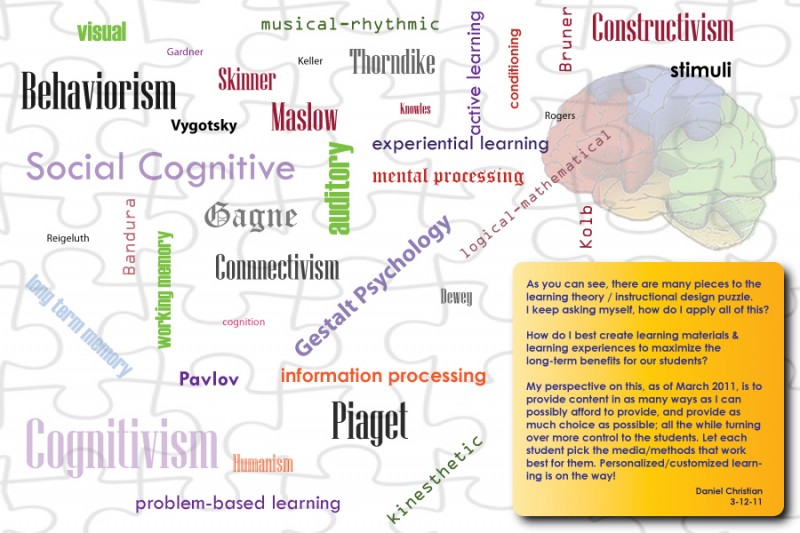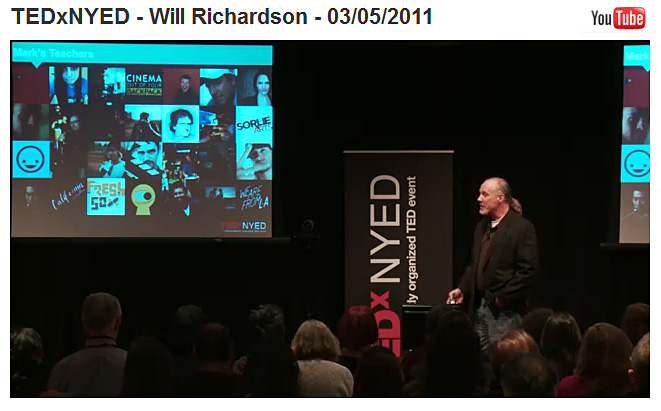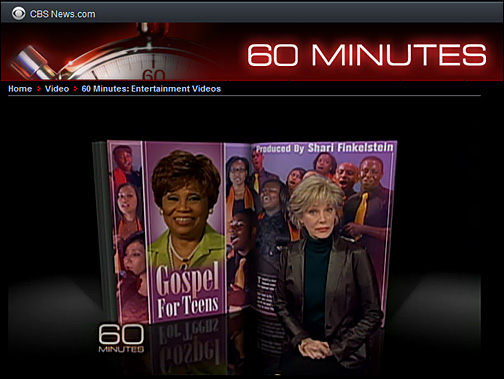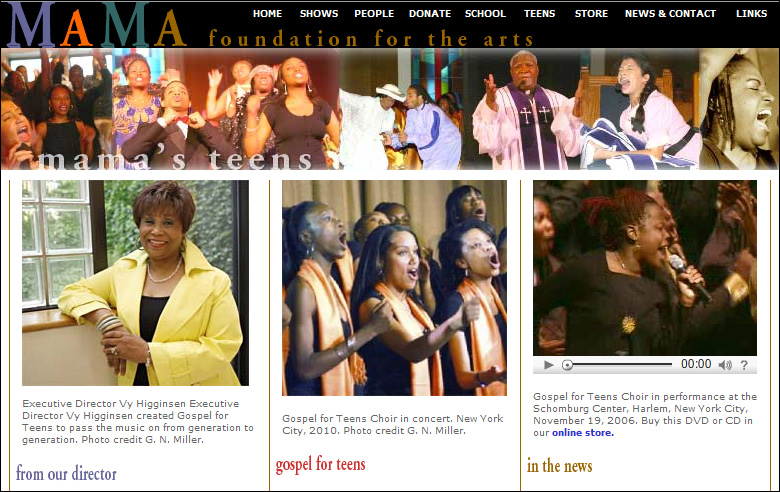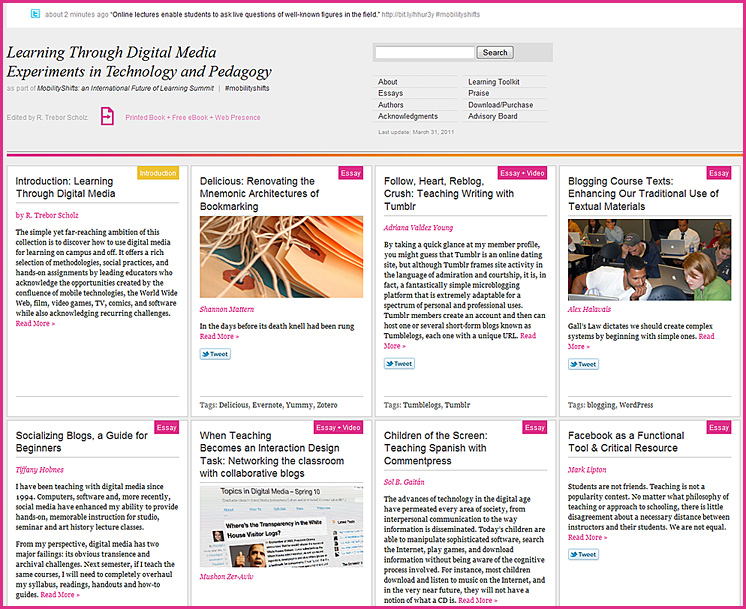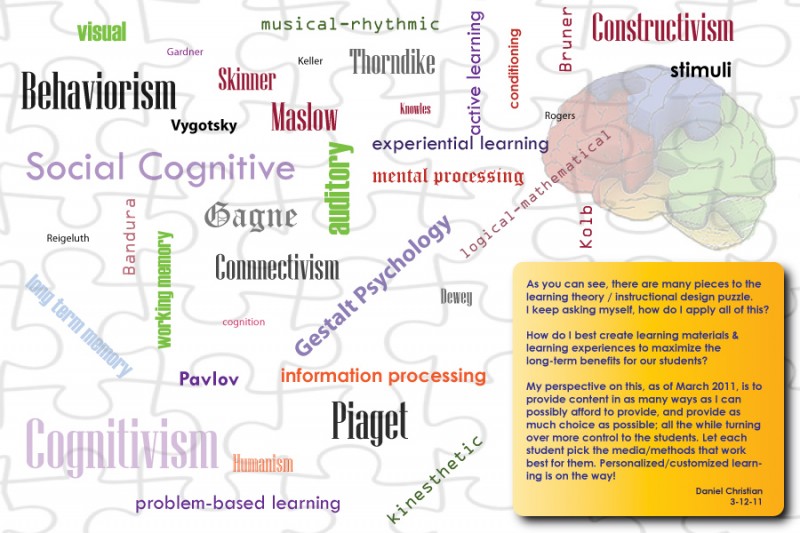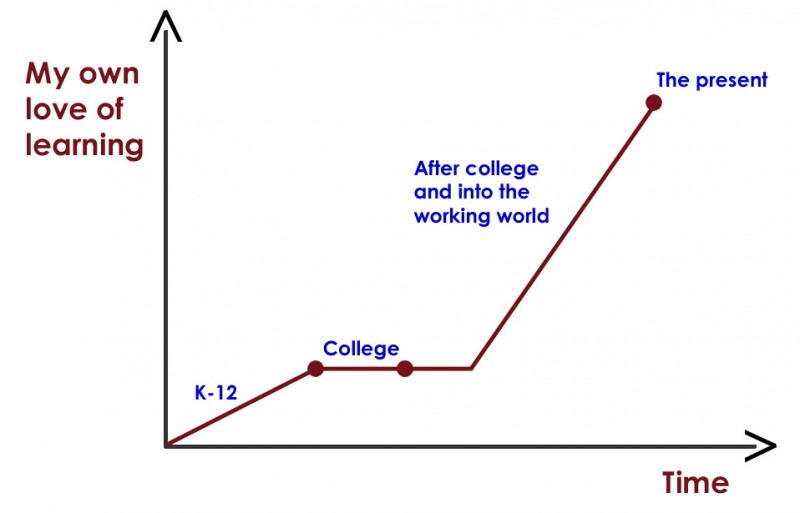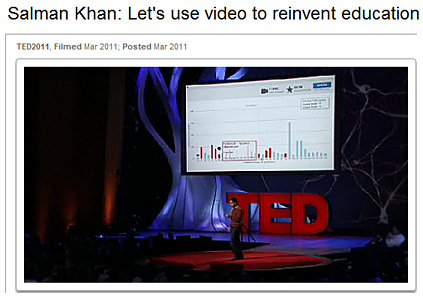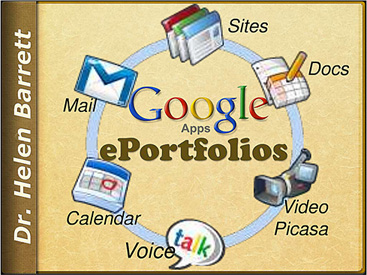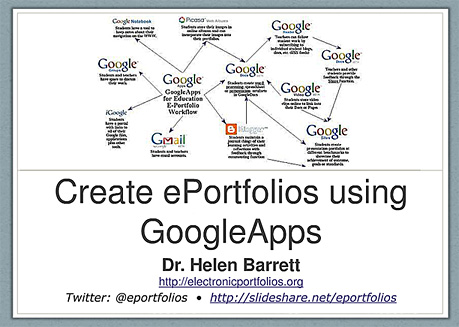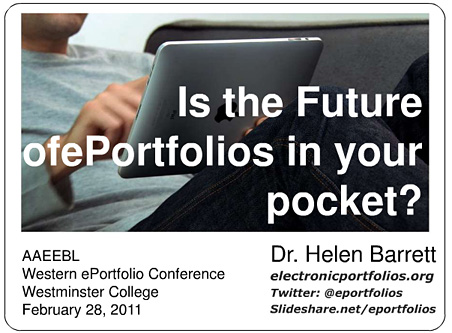Integration of Pedagogy and Technology in Teacher Education: An Interview with Emily Hixon — from etcjournal.com by Lynn Zimmerman
Excerpt:
What is the nature of the course you are planning?
The new course being developed, Educational Technology for Teaching & Learning, will explore classroom applications of educational technology in K-12 settings and address strategies for effectively integrating technology into the teaching and learning process. Students will learn about technology-based instructional resources and the pedagogical processes they can facilitate.
What is the goal of this course?
Given the increasingly important role technology is playing in our society and the educational process, this new course is being created to allow preservice teachers to experience technology integration in a more meaningful way. It will replace a previously offered educational technology course that students were required to take very early in their program of study. By offering the course later in their program and in conjunction with a field experience, students will be able to learn about technology integration in an authentic context. This course will focus more on pedagogical aspects of effective technology integration, which was difficult to do previously because of the novice level of the students early in their program.
— Originally from GETideas.org by Jes Kelly
Faculty “buy-in”– to what? — from CampusTechnology.com by Trent Batson
Excerpts:
We can continue incrementally to find our generalized theory as a national and international enterprise if we are willing to wait decades and waste enormous energy and time on failed experiments. Or, we can make efforts to bring together the learning theorists and researchers with those who understand the capabilities of the technology.
At conferences of learning theorists and researchers, we hear about useful new ideas, research results, hopeful new ways of framing what we have gleaned from a century of careful thought and work about how humans learn. But, we don’t find that these learning theorists understand the dynamics of the new technologies sufficiently to recommend a path toward implementation of the theories.
At conferences of technologists, we hear of successful work in innumerable contexts across the country. But the technologists are not aware of learning theory in most cases, or they do know about learning theory but are not active in a learning theory research field. The innumerable technology implementation contexts, then, remain just anecdotal as they are not tied to a developing new theoretical construct.
…
The challenge is to build a cultural theory that guides academia to re-imagine itself in every tiny bit of being. Who is taking up this challenge? Where is our theory? Where are our theorists?
I hope our community will move away from the simplistic notion that somehow information technology can be “bolted on and not built in” to quote a colleague from last November’s ePortfolios Australia Conference in Melbourne.
Academic transformation is under way. Don’t put the technology first; put understanding of the technology implications first–the unifying learning theory. Second, start the changes on campus that will provide the road system for academics to use in our new landscape.
From DSC:
Having just completed a course re: learning theories, I greatly appreciated Trent’s article here. In that class, I was constantly looking for the applications of the learning theories. While learning to give up on the idea of a silver bullet, I was still in search of answers to questions like:
- What does all this mean?
- What’s the bottom line for such and such a learning theory?
- How does this learning theory impact someone’s teaching and learning strategies (pedagogy and/or andragogy)?
Graphically speaking, I came up with these thoughts:
(Depending upon how you are viewing them, you may need to right click on these graphics and save them down to your desktop; them up them up in a new window/application)
And my thanks to Capella University for the underlying graphics/information here:
From DSC:
In my recent class at Capella University, one of the last discussion board questions asked:
- Do you think learning theory should be more explicit in official discussions of policy?
What a great question! My answer was yes, as it makes sense to me to guide educational reform by what is best for the students…for learning. Hopefully, we can make informed decisions. Though I’ve learned that there is no silver bullet when it comes to learning theories, each learning theory seems to be a piece of the puzzle for how we learn. Graphically speaking:
If viewing the above graphic on the Learning Ecosystems blog (vs. in an RSS feed/reader):
You may need to right-click on the above image and save it, then open it.
Such theories should have a place when policies are drafted, when changes are made. But I don’t often hear reference to the work of Thorndike, Bandura, Vygotsky, Gagne, Kolb, etc. when legislative bodies/school boards/or other forms of educational leadership are exploring future changes, directions, strategies. What is it that these people were trying to relay to us? What value can we gleam from them when we form our visions of the future? How does their work inform our selection of pedagogies, tools, organizational changes?
Using screen capture software to improve student learning — from Faculty Focus by Rob Kelly
By using podcasts, vodcasts, and screen capture software to provide supplemental and remedial materials, instructors can focus on higher-order learning activities during class, says Dave Yearwood, associate professor and chair of the Technology Department at the University of North Dakota. In an email interview with The Teaching Professor, Dr. Yearwood shared some ideas for getting started.
The facts on higher order thinking — from Faculty Focus by Maryellen Weimer, PhD
.
I just read a study that pretty much blew my socks off. An article highlighting the details will appear in the March issue of The Teaching Professor. I’ll give you the nutshell version here. The researchers were interested in finding out if there was empirical evidence to support the frequent criticism that introductory courses are fact filled with little content that challenges higher order thinking. Beyond anecdotal evidence, this research team didn’t find much empirical documentation so, being biologists, they decided to look at introductory-level biology courses.









